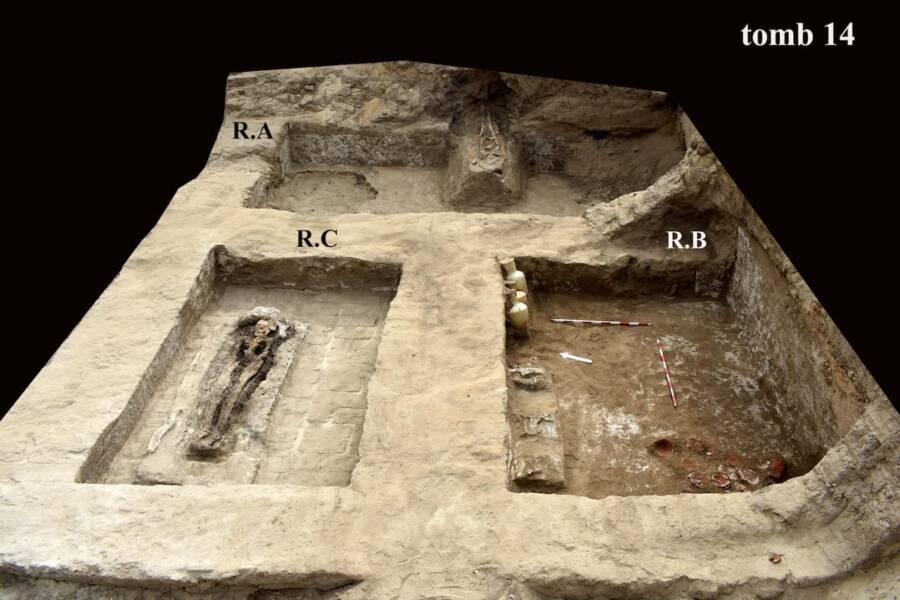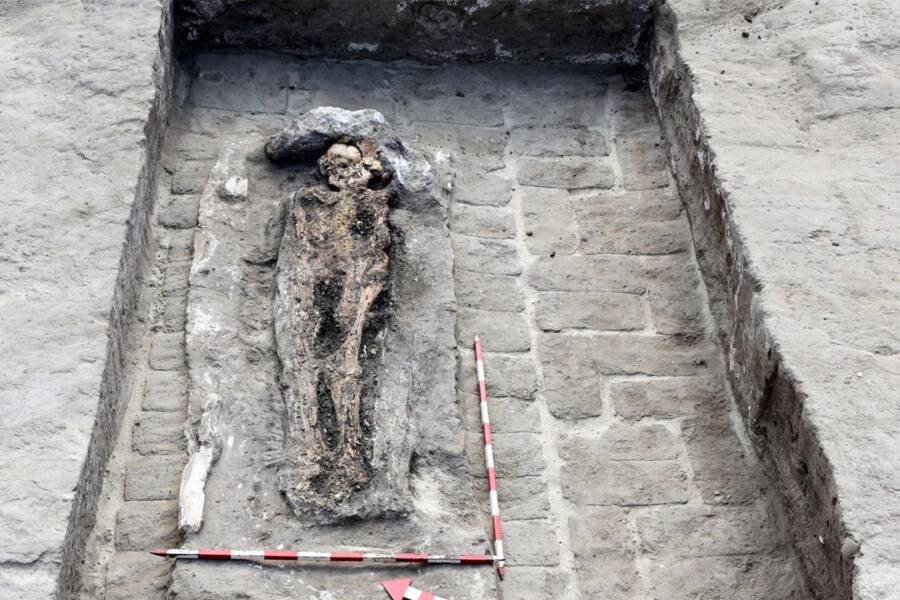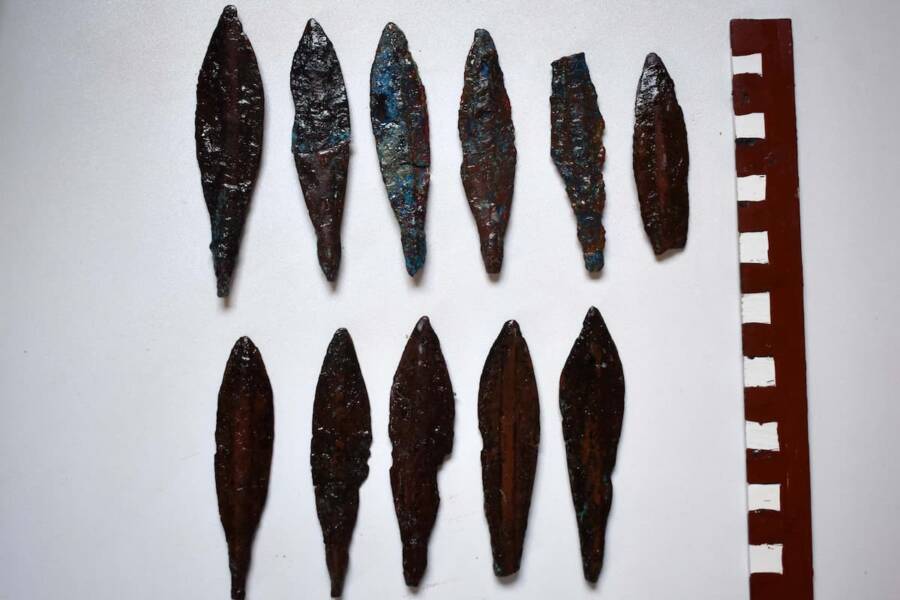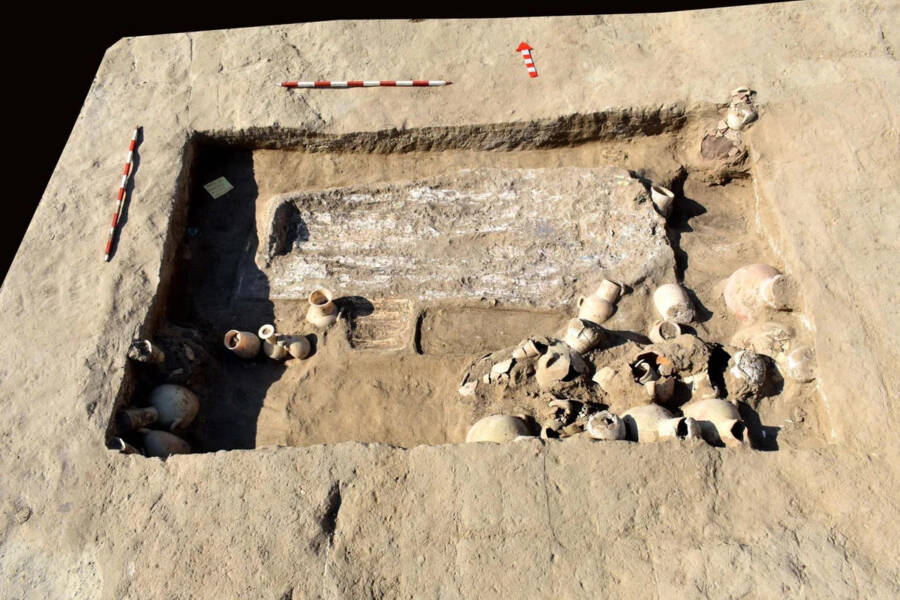The tomb contained a wealth of astonishing artifacts, including bronze arrowheads, a ceremonial scepter, and a gold ring engraved with the cartouche of Ramses III.

Ministry of Tourism and AntiquitiesThe 3,000-year-old tomb of a military commander who served during the reign of Ramses III.
A groundbreaking discovery that’s shedding new light on ancient Egyptian history has just been made at Tell Roud Iskander, located in Egypt’s Ismailia region.
While excavating the remains of a military outpost from ancient Egypt’s New Kingdom period, archaeologists uncovered a 3,000-year-old tomb belonging to a top-ranking military official who served during the reign of Ramses III.
The tomb, containing human remains as well as a wealth of artifacts pertaining to ancient Egypt’s military, has added to historians’ understanding of the region as a hub of military power while also shedding light on the lives and deaths of the individuals who served here several millennia ago.
The Discovery Of A High-Ranking Military Commander’s Tomb From The Reign Of Ramses III

Supreme Council of AntiquitiesThe remains of a top military commander during the reign of Ramses III.
Archaeologists from the Supreme Council of Antiquities (SCA) recently announced the discovery of this ancient tomb belonging to a high-ranking military commander from the reign of Ramses III (1186 to 1155 B.C.E.).
The tomb was discovered at Tell Roud Iskander in the Ismailia Governorate of Egypt. During the New Kingdom period (1550 to 1070 B.C.E.), just after Ramses III’s reign, this area was filled with important fortifications that protected ancient Egypt’s eastern borders.
This newly-unearthed tomb has shed light on the military history of the region and provided archaeologists with a rare firsthand look into the life and death of an ancient Egyptian military commander.
The tomb, built entirely of mudbrick and white mortar, features a main burial chamber with three adjoining rooms, all filled with artifacts. Nearby, archaeologists discovered more recent tombs dating back to the Greco-Roman period — pointing to the area’s continuous use and importance throughout antiquity.
Priceless Artifacts, More Human Remains, And The Historic Legacy Of These Tombs

Ministry of Tourism and AntiquitiesArrowheads discovered in the commander’s tomb.
Inside the military commander’s tomb, archaeologists uncovered a plethora of artifacts that shed light on his career and accomplishments.
Egypt’s Ministry of Tourism and Antiquities explained in a Facebook post that they unearthed several bronze arrowheads and a ceremonial scepter reserved exclusively for high-ranking officials.
Alabaster vessels were found littered across the tomb, including two vessels inscribed with the name Pharaoh Horemheb, an 18th-Dynasty ruler and commander-in-chief of the army under the reign of Tutankhamun.
While the tomb does not belong to Pharoah Horemheb, researchers are convinced that the nature of the artifacts buried there point to its owner being someone of importance in the ancient Egyptian military.
Archaeologists have also unearthed human remains in the tomb, covered in layers of linen and plaster. Near the body, researchers discovered a gold ring inscribed with the name of Ramses III, semi-precious stone beads, and a small ivory box that was once used to store personal items.
In the nearby Greco-Roman tombs, researchers have found even more artifacts, including skeletal remains from a group burial as well as amulets depicting Egyptian gods Taweret and Bes as well as the Eye of Udjat, a protective symbol.

Supreme Council of AntiquitiesA tomb from the Greco-Roman period found near the site of the military commander’s burial.
The Ministry of Tourism and Antiquities has emphasized that excavations are still ongoing in the Tell Roud Iskander area. While these most recent findings have exceeded expectations, researchers are confident that the area’s rich historical legacy will further reveal itself in time.
After reading about the tomb of this ancient Egyptian military commander, dive into the search for Cleopatra’s tomb. Then, read about who really built the Great Pyramids of Giza.





